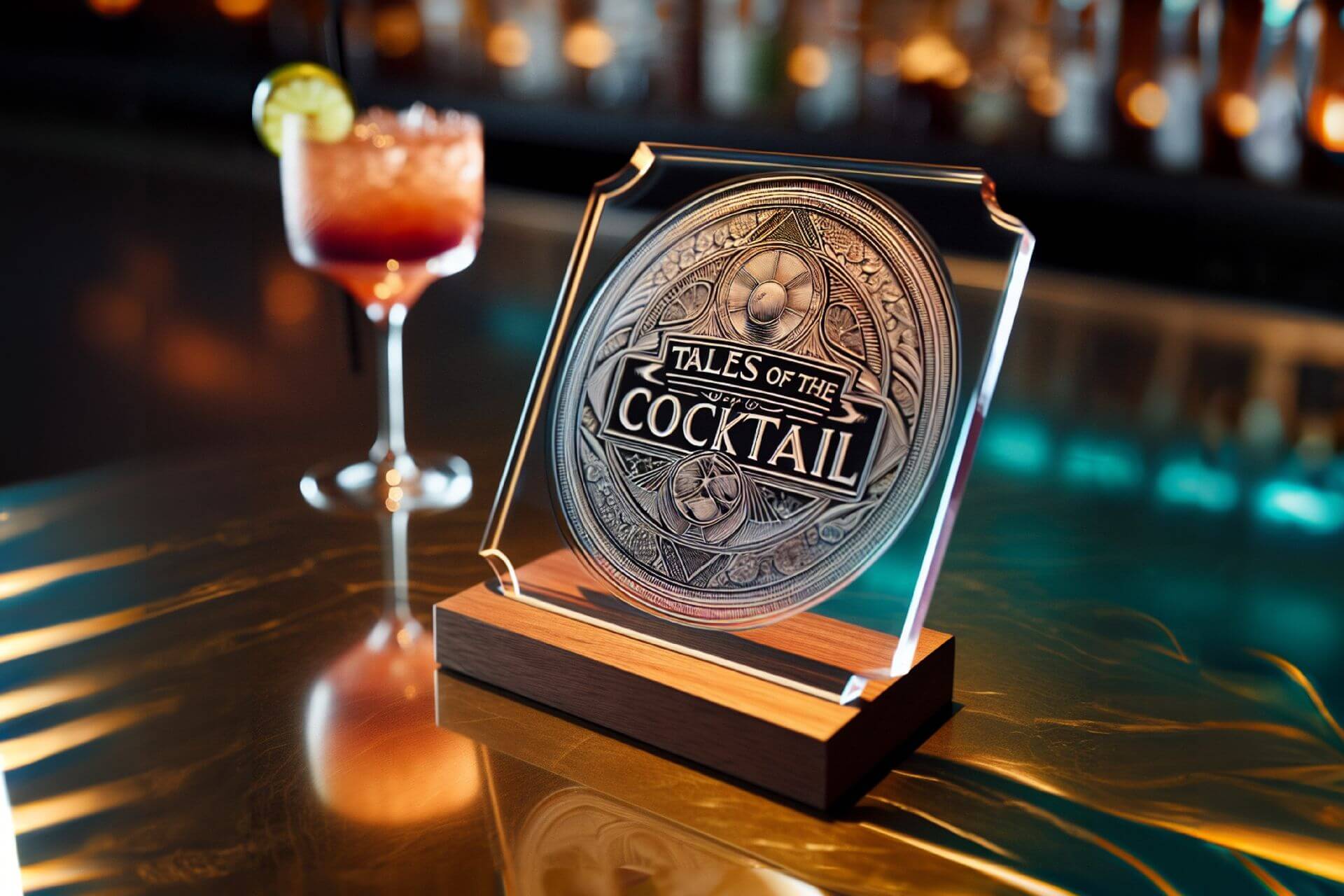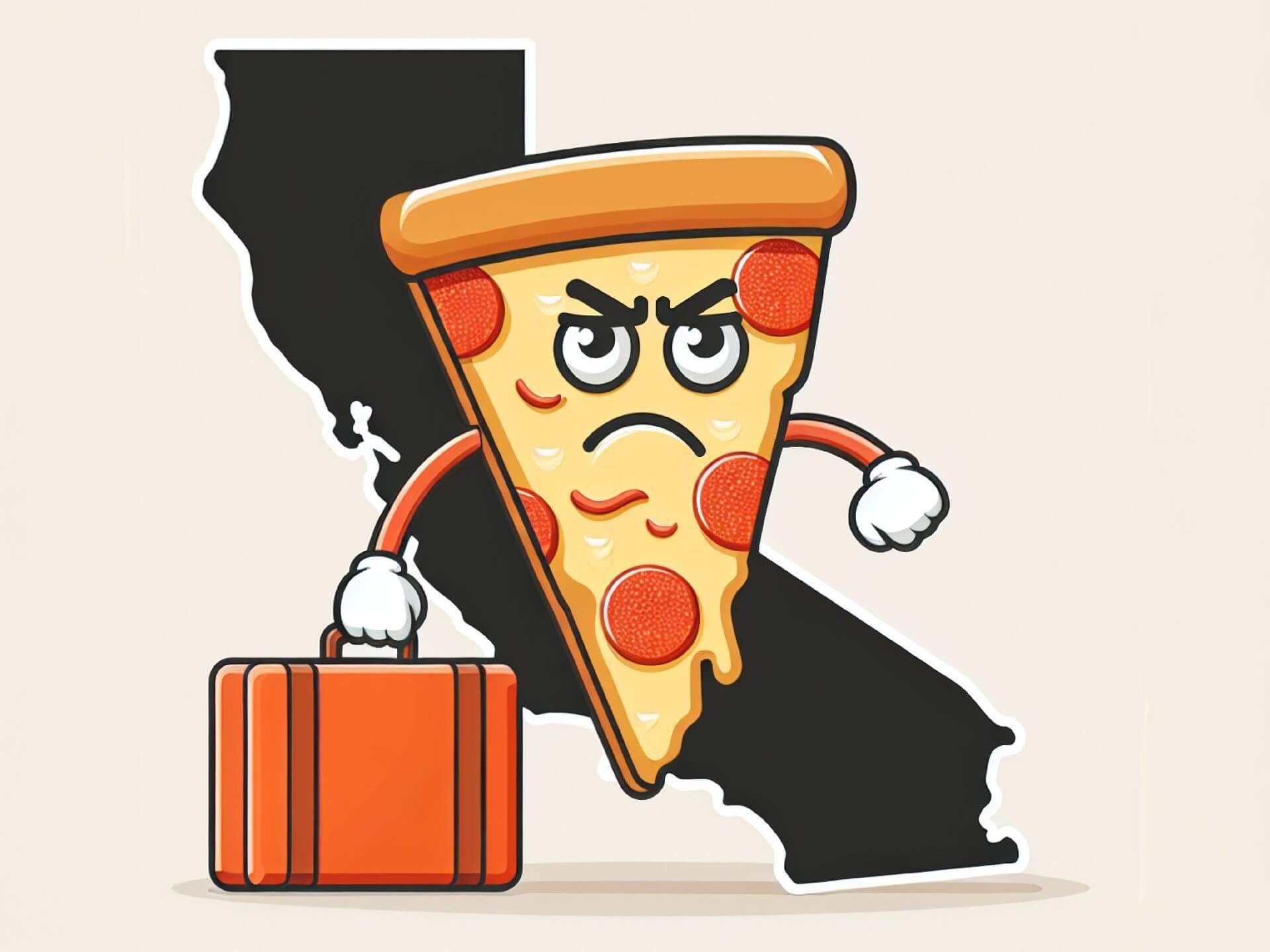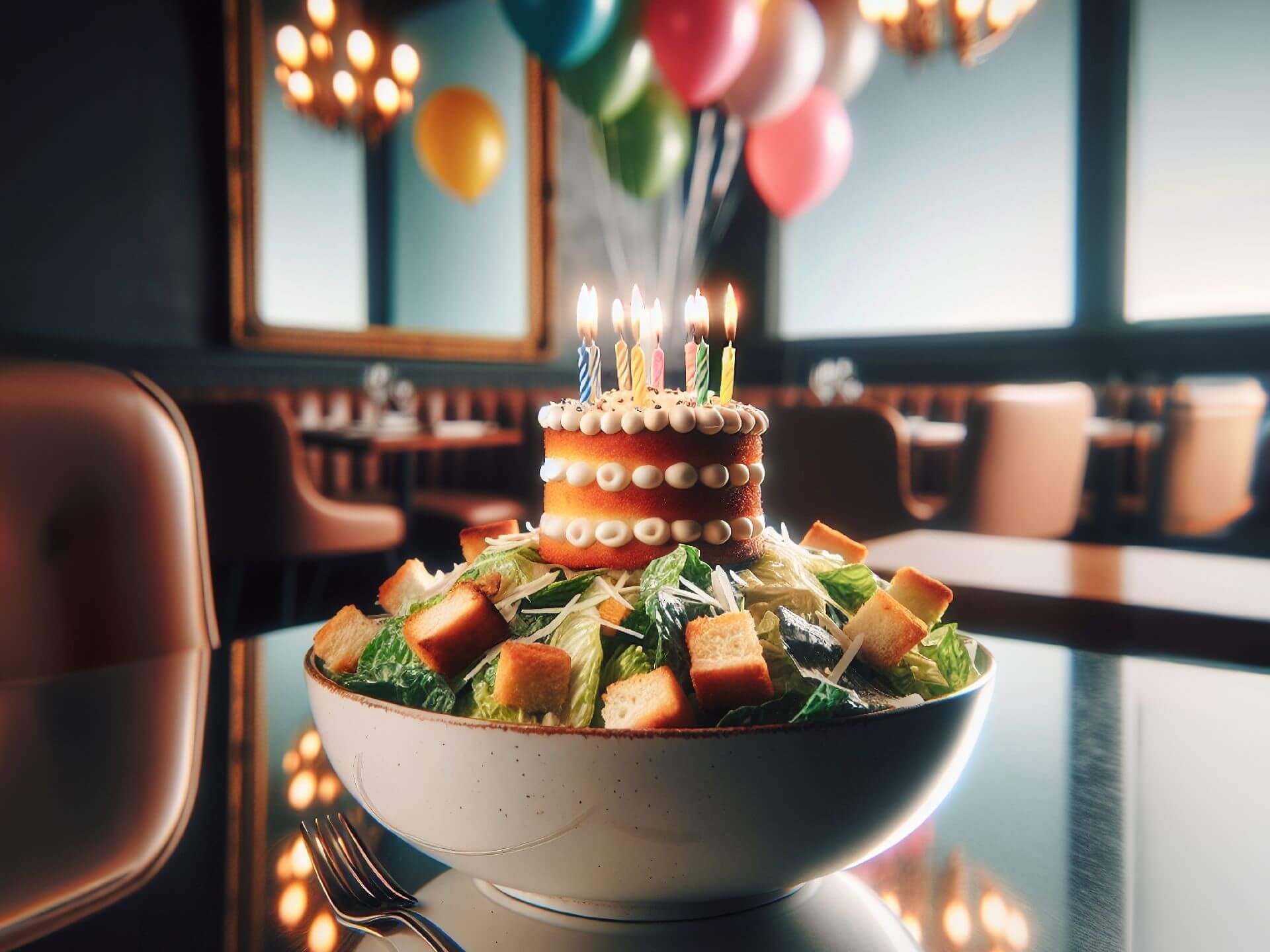The 2024 Spirited Awards: Top 4 Finalists
by David Klemt

This is what Shutterstock’s AI think a Spirited Award looks like. At least the spelling is accurate.
We’re excited to share the top finalists in each of the 2024 Spirited Awards categories, announced by the Tales of the Cocktail Foundation.
It’s a monumental task to come up with the top-ten nominees, I’m certain. So, I can only imagine what it’s like to remove six well-deserving nominees from each category.
As regular readers of KRG Hospitality probably know by now, I do have a bit of bias for venues and industry pros in Las Vegas, New Orleans, Chicago, and basically the entirety of Canada. The same can be said for Bar Hacks podcast guests.
However, I’m just excited to see such amazing people, venues, and outlets receive Spirited Awards recognition. This time around, I’ll keep my bar biases to myself.
With that said, we do know four of this year’s recipients already. We’ll learn who took home the rest of the awards on Thursday, July 25.
- Hidetsugu Ueno
- Café Pacifico — London, UK
- The Buena Vista — San Francisco, CA
- Colin Asare-Appiah
Congratulations to the winners above, and cheers to the finalists below!
US Categories
US Bartender of the Year presented by Pernod Ricard
- McLain Hedges — Yacht Club, Denver, CO
- Christine Kim — Service Bar, Washington, D.C.
- Kapri Robinson — Allegory, Washington, D.C.
- Masa Urushido — Katana Kitten, New York, NY
Best US Bar Mentor presented Jameson Irish Whiskey
- Anu Apte
- Jason Asher
- Kate Gerwin
- Alex Jump
Best US Brand Ambassador presented Tales of the Cocktail Foundation
- Tad Carducci — Gruppo Montenegro
- Benny Hurwitz — Campari American Whiskeys
- Anna Mains — Monkey Shoulder
- Natasha Sofia — Mijenta Tequila
Best US Bar Team presented by William Grant & Sons
- Century Grand — Phoenix, AZ
- Jewel of the South — New Orleans, LA
- Pacific Cocktail Haven — San Francisco, CA
- Service Bar — Washington, D.C.
Best US Cocktail Bar presented by Del Maguey Mezcal
- Double Chicken Please — New York, NY
- Happy Accidents — Albuquerque, NM
- Overstory — New York, NY
- Yacht Club — Denver, CO
Best US Hotel Bar presented by Grey Goose
- Allegory at the Eaton Hotel — Washington, D.C.
- Little Rituals at the Residence Inn/Courtyard by Marriott — Phoenix, AZ
- Pacific Standard at the KEX Portland — Portland, OR
- The Sazerac Bar at The Roosevelt New Orleans — New Orleans, LA
Best US Restaurant Bar presented by Tales of the Cocktail Foundation
- Cleaver – Butchered Meats, Seafood & Classic Cocktails — Las Vegas, NV
- Jaguar Sun — Miami, FL
- Kumiko — Chicago, IL
- Palomar — Portland, OR
Best New US Cocktail Bar presented by Diageo Bar Academy
- Cobra — Columbus, OH
- Medium Cool Cocktail Lounge — Miami Beach, FL
- Paradise Lost — New York, NY
- Superbueno — New York, NY
International Categories
International Bartender of the Year presented by Tales of the Cocktail Foundation
- Lorenzo Antinori — Bar Leone, Hong Kong, China
- Kate Boushel — Atwater Cocktail Club, Milky Way Cocktail Bar, Bon Délire, Montreal, QC, Canada
- Eric van Beek — Handshake Speakeasy, Mexico City, Mexico
- Luke Whearty — BYRDI, Melbourne, Australia
Best International Bar Mentor presented by Tales of the Cocktail Foundation
- Ryan Chetiyawardana
- Iain McPherson
- Danil Nevsky
- Christina Veira
Best International Brand Ambassador presented by Tales of the Cocktail Foundation
- Claudia Cabrera — Fratelli Branca
- Jesse Estes —Tequila Ocho
- Caitlin Hill — Rémy Cointreau
- Dave Mitton — Lot 40 / J.P. Wiser’s
Best International Bar Team presented by Tales of the Cocktail Foundation
- Handshake Speakeasy — Mexico City, Mexico
- Hanky Panky — Mexico City, Mexico
- Jigger & Pony at the Amara Hotel — Singapore
- Panda & Sons — Edinburgh, Scotland
Best International Cocktail Bar presented by PATRÓN Tequila
- 🔶🟥🔵— London, UK
- ALQUÍMICO — Cartagena des Indias, Colombia
- Handshake Speakeasy — Mexico City, Mexico
- Satan’s Whiskers — London, UK
Best International Hotel Bar presented by Fords Gin
- ARGO at the Four Seasons — Hong Kong, China
- BKK Social Club at Four Seasons Bangkok — Bangkok, Thailand
- Charles H. at the Four Seasons Hotel — Seoul, South Korea
- Side Hustle at The NoMad Hotel London — London, UK
Best International Restaurant Bar presented by Gin Mare
- ARCA Tulum — Tulum, Mexico
- Bar Kismet — Halifax, NS, Canada
- Burnt Ends Bar — Singapore
- Danico — Paris, France
Best New International Cocktail Bar presented by Diageo Bar Academy
- Bar Leone — Hong Kong, China
- Bar Nouveau — Paris, France
- Bar Us — Bangkok, Thailand
- Cat Bite Club — Singapore
Global Categories
Best New Spirit or Cocktail Ingredient presented by Tales of the Cocktail Foundation
- Don Fulano 20th Anniversary Añejo
- J. Rieger & Co. Monogram Whiskey 2023 Kansas City Whiskey – Solera Reserve
- Worthy Park 109
- YUZUCO Yuzu Super Juice
World’s Best Cocktail Menu presented by Diageo Bar Academy
- Allegory at the Eaton Hotel — Washington, D.C.
- ALQUÍMICO — Cartagena des Indias, Colombia
- Handshake Speakeasy — Mexico City, Mexico
- Jigger & Pony at the Amara Hotel — Singapore
World’s Best Spirits Selection presented by Tales of the Cocktail Foundation
- Baba Au Rum — Athens, Greece
- Eleven Madison Park — New York, NY
- Multnomah Whisk{e}y Library — Portland, OR
- Origin Bar at the Shangri-La Hotel — Singapore
Writing & Media Categories
Best Cocktail & Spirits Publication presented by Tales of the Cocktail Foundation
- CLASS magazine
- SevenFifty Daily
- The Cocktail Lovers
- The Spirits Business
Best Broadcast, Podcast, or Online Video Series presented by Tales of the Cocktail Foundation
- Bartender At Large
- Like•a•ble Cocktails by Kaitlyn
- Perspectives by Campari Academy
- Radio Imbibe
Best Cocktail & Spirits Writing presented by Tales of the Cocktail Foundation
- “A New Spirit Confronts the Consequences of Colonialism,” by Adaorah Oduah, for Punch
- “Facing Rum’s Problematic Past Is Allowing Producers to Embrace the Spirit’s Future,” by Christine Sismondo, for Imbibe
- “Indigenous Women Working in Mezcal Are Ready to Be Recognized for Their Work,” by Shayna Conde, for Wine Enthusiast
- “Meet the People Keeping Queer Bars Safe,” by Rax Will, for Punch
Best New Cocktail or Bartending Book presented by Tales of the Cocktail Foundation
- Slow Drinks: A Field Guide to Foraging and Fermenting Seasonal Sodas, Botanical Cocktails, Homemade Wines, and More by Danny Childs
- The Book of Cocktail Ratios: The Surprising Simplicity of Classic Cocktails by Michael Ruhlman
- The Ice Book: Cool Cubes, Clear Spheres, and Other Chill Cocktail Crafts by Camper English
- TROPICAL STANDARD: Cocktail Techniques and Reinvented Recipes by Garret Richard & Ben Schaffer
Best New Book on Drinks Culture, History, or Spirits presented by Tales of the Cocktail Foundation
- How to Taste: A Guide to Discovering Flavor and Savoring Life by Mandy Naglich
- ICE: From Mixed Drinks to Skating Rinks–a Cool History of a Hot Commodity by Amy Brady
- Juke Joints, Jazz Clubs, and Juice: A Cocktail Recipe Book Cocktails from Two Centuries of African American Cookbooks by Toni Tipton-Martin
- The Maison Premiere Almanac Cocktails, Oysters, Absinthe, and Other Essential Nutrients for the Sensualist, Aesthete, and Flaneur: A Cocktail Recipe Book by Joshua Boissy, Krystof Zizka, Jordan Mackay, William Eilliott
TALES OF THE COCKTAIL FOUNDATION ANNOUNCES 2024 SPIRITED AWARDS® TOP FOUR FINALISTS
The 18th annual Spirited Awards® celebrates global excellence in the drinks industry and recognizes professionals, organizations, and establishments shaping the cocktail community
NEW ORLEANS, LA (June 17, 2024) — Tales of the Cocktail Foundation (TOTCF) is honored to announce the Top Four Finalists for the 18th annual Spirited Awards®. Since its founding in 2007, the Spirited Awards® has become one of the industry’s most revered awards, recognizing beverage professionals, products, and establishments across every facet of the spirits and cocktail community on a global scale. In partnership with Forbes, the Spirited Awards® official media partner, TOTCF will honor recipients during the Tales of the Cocktail® (TOTC) conference, which is celebrating its 22nd-year in New Orleans from July 21-26, 2024.
The Spirited Awards® are comprised of industry accolades, both domestic and international, writing and media awards, and overall awards that transcend regionality, including World’s Best Cocktail Bar and World’s Best Cocktail Menu. Today, Tales of the Cocktail Foundation is proud to announce the Top Four finalists of each category, in addition to the recipients of the Helen David Lifetime Achievement Award, Timeless U.S. and International Awards, and the Tales Visionary Award. The awards categories spotlight a range of talent from bartenders, journalists, brand ambassadors, and industry luminaries, to brands and media, to ensure each aspect of the industry is represented and recognized for its incomparable contributions.
“It is with immense pleasure that we celebrate those propelling the cocktail industry forward and amplifying their craft within their respective communities,” said Charlotte Voisey, Spirited Awards® Overall Chair. “We are honored to announce our Top Four Finalists for the 2024 Spirited Awards and recognize the incredibly talented individuals receiving the Helen David Lifetime Achievement Award, Timeless U.S. and International Awards, and the Tales Visionary Award. Their love-affair with hospitality and dedication to advancing the industry is awe-inspiring. We are excited to celebrate and honor them at the 18th annual Spirited Awards.”
[See above for the top-four finalists in each category.]
The 18th Annual Spirited Awards® Ceremony
The 18th annual Spirited Awards® Ceremony will be celebrated on July 25, 2024, at the Fillmore New Orleans. For those who are interested in attending the Spirited Awards®, two tiers of tickets are now available – Spirited Awards® Ceremony Side Seating and Spirited Awards® Ceremony Stadium Seating. Additional information and to purchase tickets, please visit the Spirited Awards® website.
Spirited Awards® Judges
Below is a list of Spirited Awards® Chairs, responsible for overseeing the judging process this year:
- Spirited Awards® Overall Chair
- Charlotte Voisey
- Asia Pacific Co-Chairs
- Sam Bygrave
- Andrew Ho
- Symphony Loo
- Charmaine Thio
- Canada Co-Chairs
- Kate Boushel
- Jonathan Smolensky
- Europe Co-Chairs
- Stephanie Jordan
- Roberta Mariani
- Latin America & Caribbean Co-Chairs
- Carlos Aguinsky
- Georgina Barbachano García
- Middle East & Africa Co-Chairs
- Stephen “KOJO” Aidoo
- Caitlin Hill
- Nana Sechere
- U.S. Central Co-Chairs
- Joshua Gandee
- Lynn M. House
- U.S. East Co-Chairs
- Jackson Cannon
- Jaymee Mandeville
- U.S. West Co-Chairs
- Jason Asher
- Erin Schaeferle
- Timeless Co-Chairs
- Jared Brown
- Anistatia Miller
- Writing & Media Co-Chairs
- Ryan Chetiyawardana
- Emma Janzen
- Sandrae Lawrence
Spirited Awards® judges are a collection of respected bartenders, bar owners, educators, and writers from across the globe entrusted with this critical calling. Drawing on their years of experience and their knowledge of the current work being done locally, nationally, and internationally, together the judges can evaluate nominees from far and wide to ensure that the Spirited Awards® represents the breadth and diversity of the global drinks industry.
Tales of the Cocktail Foundation’s Spirited Awards® Committee is dedicated to valuing the inclusion of the communities the foundation serves, by ensuring that our judging panel reflects their incredible diversity in terms of race, gender, ethnicity, and sexuality. Recognizing that inclusion is key to a well-represented committee, TOTCF strives to ensure that we have an equitable representation of gender across the judging panel. The Spirited Awards® are not based on popular vote and all nominations are evaluated by their respective judging committees.
Spirited Awards® Directory
Tales of the Cocktail is pleased to share the Spirited Awards® Directory giving discerning imbibers a comprehensive compendium of all Spirited Awards® winners and nominees from the past 18 years. This resource is updated annually, making it a go-to guide for planning the perfect drinking and dining itinerary. Access Spirited Awards® Directory to explore award-winning bars.
A Special Thanks: Spirited Awards® Sponsors
Tales of the Cocktail Foundation would like to thank all of its Spirited Awards® sponsors: Del Maguey Mezcal, Diageo Bar Academy, Fords Gin, G. H. Mumm Champagne, Gin Mare, Grey Goose, House of Lustau, Jameson Irish Whiskey, Johnnie Walker, Lyre’s Non-Alcoholic, PATRÓN Tequila, Pernod Ricard, and William Grant & Sons.
To follow along for additional information on the Tales of the Cocktail Foundation, please visit the website, Instagram, Twitter, and Facebook.
About Tales of the Cocktail Foundation
Tales of the Cocktail Foundation is a non-profit organization that educates, advances, and supports the global hospitality industry and creates lasting impact in our host communities. Tales of the Cocktail Foundation is the global leader in spirits education and a platform to tackle issues facing the industry. The pillars of the Foundation are to Educate, Advance, and Support the hospitality industry through programs that benefit individuals and organizations in the community and to make a lasting impact in communities that host our events.
About Forbes
Forbes champions success by celebrating those who have made it, and those who aspire to make it. Forbes convenes and curates the most influential leaders and entrepreneurs who are driving change, transforming business and making a significant impact on the world. The Forbes brand today reaches more than 140 million people worldwide through its trusted journalism, signature LIVE and Forbes Virtual events, custom marketing programs and 42 licensed local editions in 68 countries. Forbes Media’s brand extensions include real estate, education and financial services license agreements.
Image: Shutterstock. Disclaimer: This image was generated by an Artificial Intelligence (AI) platform.

















